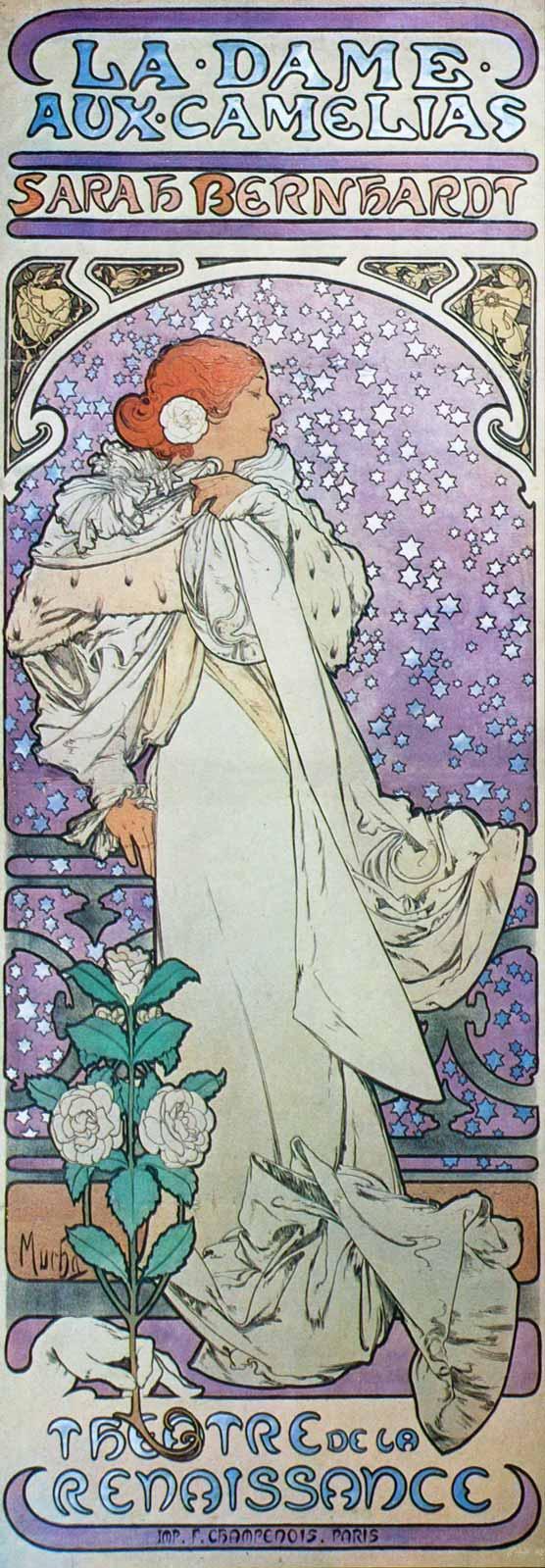Alphonse Mucha (1860–1939), the Czech painter, illustrator, and graphic artist, may have done more than anyone to bring Art Nouveau into popular culture through his posters of French stage actress Sarah Bernhardt. His work and more are on display at the Poster House, a new museum that opened in Manhattan, New York, earlier this year. The Mucha exhibit runs through October 6, 2019.
Mucha grew up in Morvavia, now part of the Czech Republic, and was fortunate that his singing abilities allowed him to continue his education and ultimately pursue his passion for art. Later, he was able to secure a job painting theatrical decorations and sets. In 1888, Mucha move to Paris, where he was finally able to secure formal art training. Although his education was short, Mucha decided to pursue magazine illustration, where he found regular work.
Meanwhile, Bernhardt, who was a highly successful actress and producer, had returned to Paris in 1893 from a world tour that allowed her the financial means to manage the Théâtre de la Renaissance for the next six years. While starring in the play Gismonda in 1894, she hired Mucha to create a poster for the announcement of the extension of the play.





























